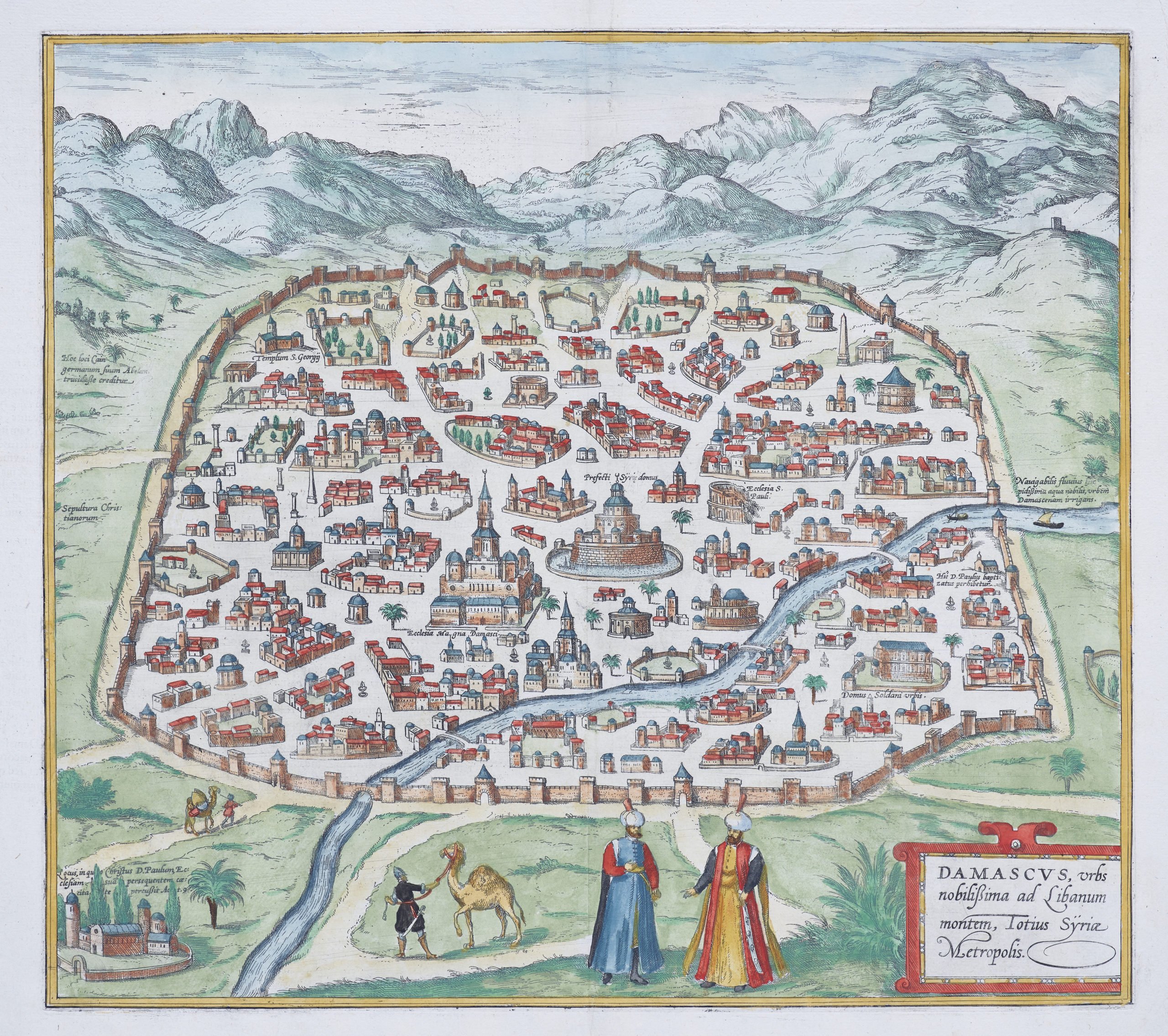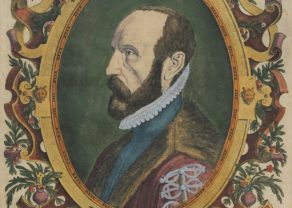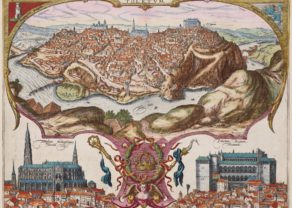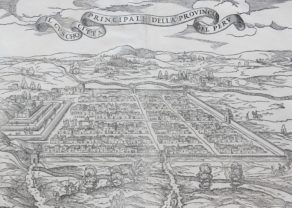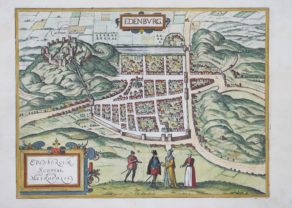Damascus – Urbs Nobilissima ad Libanum Montem, Totius Syriae Metropolis
One of the few non-European cities in the Braun & Hogenberg atlas
Detail
Date of first edition: 1581
Date of this edition: 1581
Dimensions (not including margins): 32 x 35,5 cm
Condition: excellent. Sharp copper engraving printed on paper. Centre fold is as published, with one minor hole. Superb old hand coloured. Wide margins.
Condition rating: A+
Verso: Latin text
From: the atlas Civitatis Urbis Terrarum (II: De praecipuis, totius universi urbibus, liber secundus), first published 1575, this edition also 1575, Köln
In stock
Damascus commented by Braun (on verso):
A stone’s throw away from Damascus is the place where Christ appeared to Paul as he persecuted the Christians, and called out to him: “Saul, Saul, why are you persecuting Me?” On this site Christians now have their cemetery and a church. On the other side of the town, roughly an Italian mile away, a church can be seen that occupies the spot where Cain struck dead the pious Abel. Moreover, Holy Scripture, as well as all learned theologians, relates that God created our first parents, Adam and Eve, in the area around this city.”
TRANSLATION OF CARTOUCHE TEXT: Damascus, famous city at the foot of Lebanon, capital of all Syria.
Taschen on Damascus:
The plate depicts Damascus in a bird’s-eye view. The Umayyaden Mosques, erected as early as AD 705, can be seen inside the city walls, at the centre. Two staffage figures wearing turbans and kaftans can be seen standing in the foreground. The sites mentioned in the text can be identified to the left outside the city walls, in the lower left the memorial church, where Christ appeared to Paul, above this the Christian cemetery and in the upper left the spot where Cain struck Abel dead. Damascus was, owing to its location in a large oasis in an otherwise extremely arid region, settled very early, around 5000 BC. It belonged many years to the Egyptian Empire, but was then captured by Alexander the Great and, following the conquest of the Romans by Marcus Antonius, returned to Egypt. In AD 636 the town was occupied by the Arabs and remained under their rule until the Ottomans took it in 1516. For Christian Europe, Damascus was of little relevance, but it was marvelled at for its wealth and peace, and considered the cradle of civilization.
